Water is necessary for life; we use water for our everyday needs like drinking, cooking, washing dishes and clothes, showering, gardening, and for our animals. We cannot survive without it. But what if, for whatever reason, the flow slows or stops? Whether it’s to help us be more water-wise or to be prepared, let’s talk about storing water.
The USDA recommends storing water for up to 6 months before replacing it. Water, stored properly, has a nearly indefinite shelf-life according to research and experience. Many people don’t like the flavor of stored water and may opt for shorter storage times before rotating their supply.
Personally, we’ve got a 55-gallon drum of water in our food storage. We filled it several years ago, but it’s still safe and drinkable. More on that in a bit, though. Read more facts about water, how long you can store it, and the process of how to safely store water below. And don’t worry – we’ll talk about the stale flavor of stored water, too.
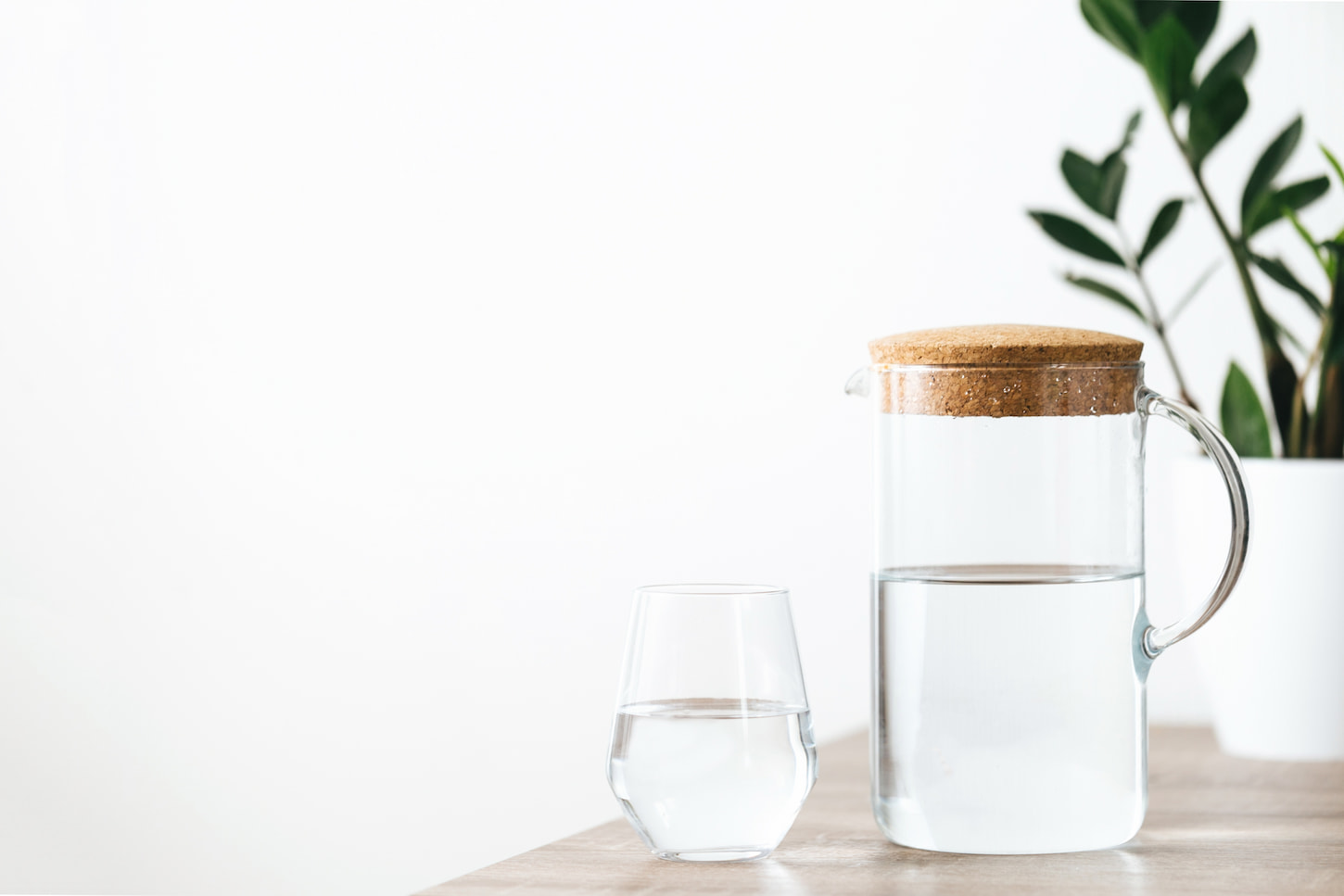
How Much Water Should you Store?
Store one gallon of water per person in the household per day for as many days as utilities could be off during an emergency. A family of 5 would need 15 gallons for three days or 70 gallons for two weeks. Store additional water for pets, livestock, or as a backup as needed.
When there is a water-related emergency, one of the hardest things to look for is clean water. To be prepared, you should start storing water. The main question is; how much water should you store for your whole family? Then here is a simple solution for you:
(Number of days where water is needed) x (Number of persons in your house) = gallons of water to store
For example, then, here’s how the math works.
- A single person would need 3 gallons of water for 3 days, or 14 gallons of water for two weeks (14 days).
- A family of four would need 12 gallons of water for 3 days, or 56 gallons for 14 days.
- A family of eight would need 24 gallons of water for 3 days, or 112 gallons for two weeks.
This is based on the general assumption (as supported by the FDA) that a single person needs one gallon of water each day. This gallon per day should supply all of the drinking water needed for that person.
However, since most people don’t always drink a gallon per day, then it might also cover some basic cleaning, too. However, I like to store a separate water supply for cleaning water. That way, I can just focus on the main drinking water with the gallon per day – and this will give you some more wiggle room in case your emergency timeline lasts longer than expected.
How Long can Water be Stored at Room Temperature?
Water can be stored at room temperature safely with minimal risk for up to 6 months, according to the USA’s government page at ready.gov. They recommend replacing stored water every 6 months, though it may be safer to store it indefinitely with additional risk. Some people still like to change it more frequently because they believe water stored too long will have a bad taste.
Room temperature is the suggested place where you should store your water. So, what is room temperature? Room temperature ranges from 50 – 70°F (10-21°C) according to the Centers for Disease Control and Prevention (CDC).
In regards to the research we mentioned earlier (where water might be fine stored indefinitely), it was done at the University of Florida. They found that water has an indefinite shelf life if it is stored properly.
But, it is still ideal to replace it every after 6 months for it to be safe and have good flavor (or taste).
To store your water indefinitely properly at room temperature, make sure that your water tank is sanitized and sealed properly to avoid contamination.
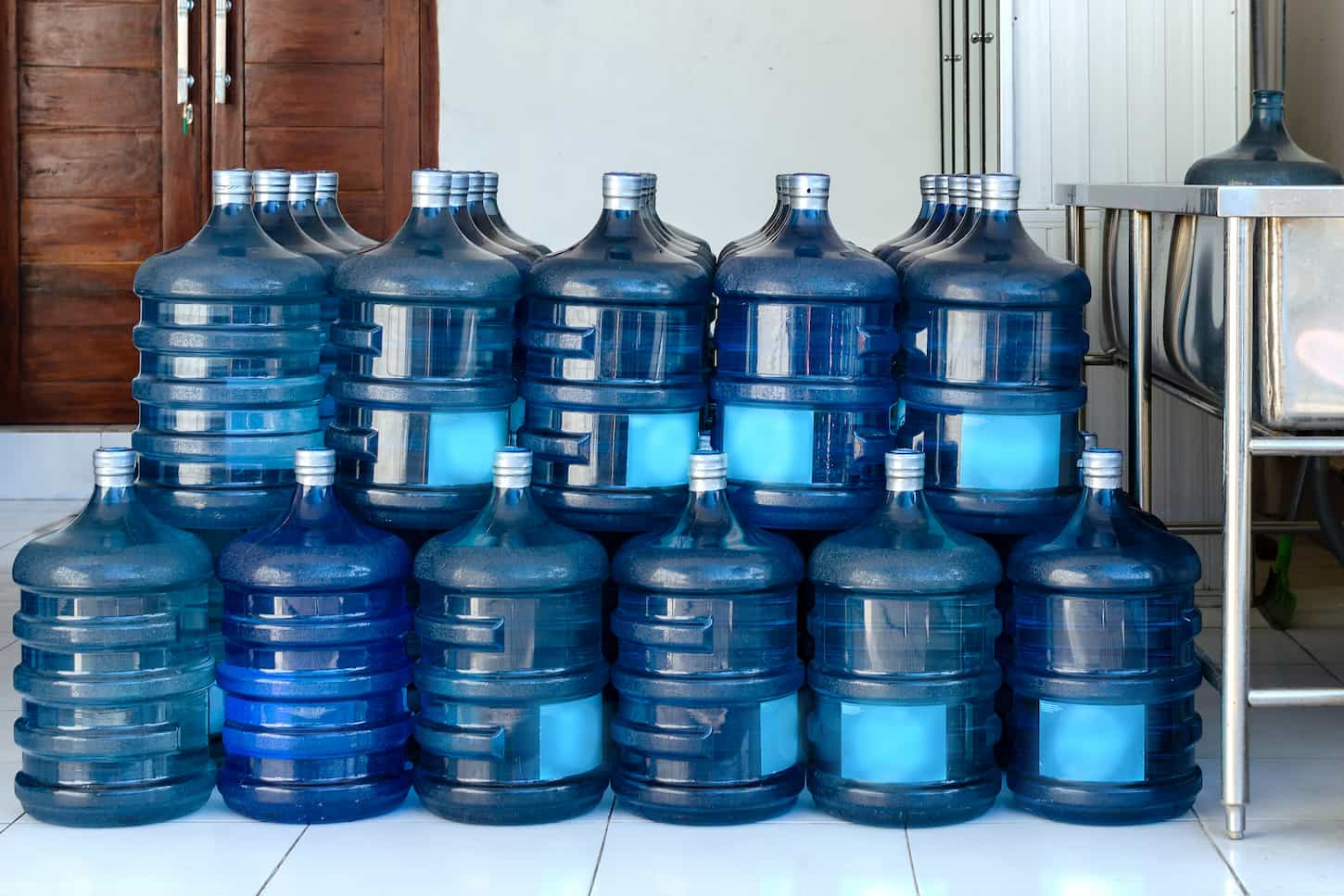
How Long can Water be Kept as Part of Food Storage?
Water should always be a focused aspect of food storage. Water may be stored indefinitely or rotated every 3-6 months (or more frequently if desired), as long as it can be stored safely to minimize the risk. Water storage should also include ways to access stored water and purify additional water as needed.
Having food storage that has a complete stock of food and water supply will help you through emergencies. There are many steps on how you can keep your food safe, but how about water? How long can you keep water in food storage?
The length of time you can store water in food storage depends on many variables like the location in your food storage – where you will put your water tank, the type of water tank, sanitation, and the purity level of your water
If these variables are followed the shelf life of your water can last indefinitely, but it is still very important to change it every after 6 months to avoid some health risks. There is a saying that if you are in doubt, throw it out; because being cautious is more important than risking your health.
The International Bottled Water Association (IBWA) advises people on the following steps when storing water supply:
- Keep your water tank in a room or a cooler temperature.
- Keep your water tank out of direct sunlight to avoid the growth of microorganisms.
- Tags are very important – writing the dates will let you know when to change the water supply.
- Keep your water supply away from chemicals such as household cleaners, dry cleaning materials, gasoline, and paint thinners.
Storing water (and food) away from chemicals is always smart. Chemicals can leach into all sorts of things – and we don’t want that in our food or water. So keep them separated – and never store chemicals above your food and water storage.

How can you Treat Water for Long-term Storage?
Having a stock of potable water is much better than having nothing in case of emergencies so, here are some tips on how you can treat your water and prepare it for long-term storage.
Tip #1: Use the right water container
The first thing you need to consider is the container that you will use to stock your water. Choosing the right container has a big effect on keeping your water supply safe. If you are going to use plastic bottles, make sure that it is a food-grade plastic bottle.
You can also use glass bottles or fiberglass bottles, stainless steel or enamel-lined metal containers also another option but, it is still much better if you are going to use plastic.
If you are planning to stock more quantity of water a “new” 55-gallon high-density polyethylene water barrel is by far the best option when it comes to long-term water storage. It can block off sunlight, which can reduce the growth of bacteria and algae, make sure to look for a stamp that says HDPE 2 on the side of the barrel.
A gentle reminder to not buy a used barrel because of its cheaper price, even if it is tempting. It is much better to spend a few extra bucks on a new one rather than risking your health because of contamination. You never know what they did to that barrel before it reaches you.
Make sure to also not use a container that held toxic (poisonous) materials, because this tiny amount of materials or substances can remain in the container’s pores which can have a bad effect on your water stock (and then you and your family) in the long run.
Going to reuse water bottles or gallon jugs? You can do so, but make sure you follow the rest of these steps. And keep in mind that some thinner plastic bottles or jugs won’t last as long as the thicker, blue plastic water jugs will. They may need to be fully replaced after 6 months or a year.
Tip #2: Sanitize the water container
The next step is to sanitize the container that you are going to use. You can use warm soapy water or household liquid bleach that contains 4% to 6% of sodium hypochlorite and combine it with water. Do not use bleach that contains detergent and fragrances.
Mix the solution thoroughly into your container and let it stand for a good 10 to 20 minutes, depending on the size of your container. Remove the sanitizing solution, then rinse your container again with potable water.
If you’re using a large, 55-gallon drum, this is done easier in the warmer weather. It’s darn near impossible to get the thing clean and empty when water keeps freezing to the bottom of it!
Tip #3: Fill it up with tap or treated water
Now your container is ready, you can now fill it up with water. Using tap or home-treated water is the best to use, as you won’t get surprised microorganisms or algae growing in your water.
You can use a small amount of fragrance-free, food-grade bleach to treat your water at home. The bleach bottle should have instructions on treating water. I think it’s usually something like a capful (or a tablespoon) per every 5 gallons of water.
Or, if you’d rather stick to already-treated tap water, then you can fill it up directly from your water faucet. You can also use a food-grade water hose for bigger containers like barrels. Remember to not use a regular water hose because some regular hoses contain lead, which can affect your water.
If you’re storing water for the shorter term or there’s a risk of the water freezing, then make sure to leave 3 to 4 inches of air space before sealing the container. Frozen water tends to expand, and you don’t want your container to break.
We’re storing our water in a relatively climate-controlled cold storage in our basement. The water isn’t at risk of freezing, even in an emergency. In this kind of scenario, it’s more than fine to fill the container up to the top and then seal it.
Tip #4: Use a water treatment or preserver
If you’d like to make sure that your water is safe for indefinite or super-long-term storage, then you’ll want to use some sort of everlasting water treatment or water preserver.
Water preserver concentrate is fairly easy to find in most stores. Just make sure you’re getting an EPA-approved product that’s tested and proven to extend water’s shelf-life. At the end of this article, I’ll share some links to EPA-approved water preservers and other water storage products.
Using bleach alone as your water treatment is an option, but some people say it’s not as safe nor as reliable as using a dedicated preserver.
That being said, we’re totally just using bleach-treated water. Some people say it’s dangerous due to possible mercury and arsenic, but we only ever buy food-grade bleach that’s safe for water. At least when we use it in water. If it’s for laundry or cleaning, then we just buy regular bleach!
We’ve tested our stored water stored this way, and it tastes just the same as water stored with other treatments.
Tip #5: Seal the water container
The next step is to seal the container tightly. You don’t want any bacteria or other microorganisms mucking in your water, right? The lids should be rinsed and sanitized thoroughly first. Make sure to also remove any paper components from the lid.
For barrels, you can use a bung wrench so you can easily tighten the seal or remove it without damaging the cap.
If you do get a barrel, make sure you’ve got a pump to get the water out when you need it. A full barrel is dang hard to knock over – and then you’d waste all that water anyway.
Tip #7: Label and store
Label each container with the date when you filled it with water and stored it. Labeling helps you know when to change the water inside. Store your water in a cool and dry place. If it is a small bottle, you can put it in a refrigerator or a freezer.
Just know that water stored in a fridge or freezer may need to be checked on more regularly than if it’s left at room temperature. Most containers can degrade faster (or even break) with extreme temperature changes – like freezing in the freezer.
That’s part of the reason we stick to our 55-gallon drum in the cold storage pantry. It’s easy to forget about it, now that it’s full. But we’ve got it if (or when) we need it.
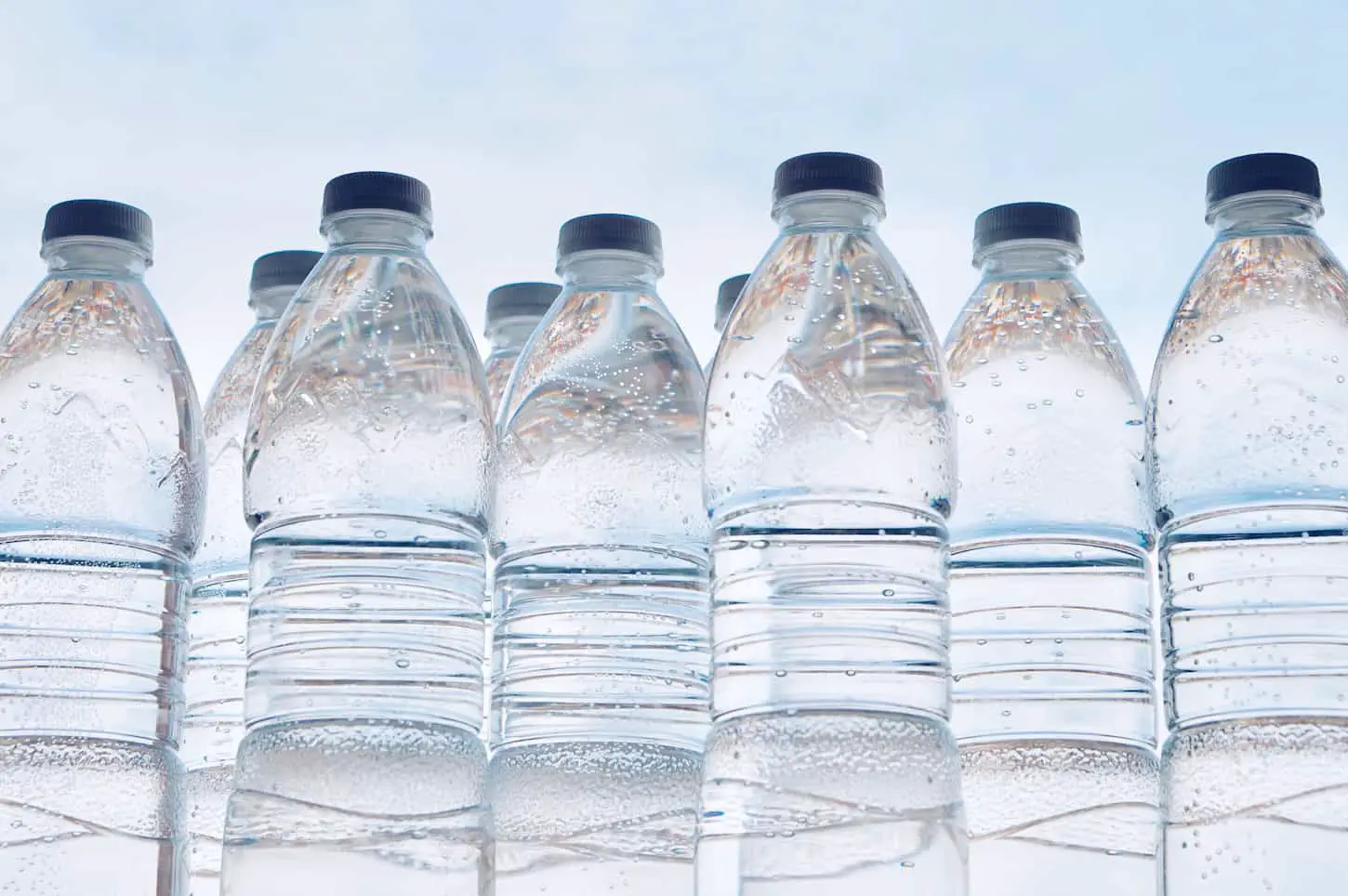
How Often Should You Rotate Water in Food Storage?
Water should ideally be rotated every 6 months, or more frequently if the container is at risk of degradation. Some water containers can store water indefinitely if the water and container are both prepared correctly.
If your water supply is properly stored it is still advisable to check it every after 6 months. Make sure to check if there are growing organisms in it and also to check if it is still drinkable. If you added a special additive to it like a water preserver concentrate, you can rotate your water supply once a year or even after 5 years.
Boiled Water Guide (Can you store boiled water?)
Boiled water can be stored for up to 6 months at room temperature, if properly treated and stored. Boiling water is a safe, effective, and cheap way to purify water in an emergency or for storage. Boiling water inactivates most pathogens, but not pollutants or toxins.
Boiling water is known to be the cheapest and safest method of purifying water. Boiling water kills harmful bacteria, viruses, and parasites.
You should boil water for at least 2 minutes, but if you are in a high-altitude area it is recommended to boil water for at least 3 minutes.
I’ve heard that you should not boil water for more than 5 minutes, because excessive boiling can result in an increase of toxicity in water. I’m not sure about that, though, because if it was, everyone who made pasta would be in trouble.
However, other types of pollutants like lead cannot be easily filtered out. If you have more than a few gallons it is more practical to just use a chemical disinfection treatment.
How long can boiled water be stored at room temperature?
According to the CDC, you can store boiled water at room temperature for up to 6 months. The boiled water should be put into sanitized containers and at room temperature that is not more than 70°F (21°C).
How do you store boiled water?
After the boiling process, you should let the water cool down first before drinking or transferring it into a container. Make sure that your container is sanitized properly and is airtight. Please do NOT refrigerate boiled water (read why in my article here).
You may notice that the taste of boiled water is very different than “regular” water. To enhance its flavor of it, you can do one of the following.
- Incorporate air into it by shaking it
- Pour the water back and forth between two different containers (but make sure that the containers that you are going to use are properly sanitized).
- Use some kool-aid or drink mix to make some Tang or something like that.
We keep a good stash of drink mixes (we’re fond of sugar-free lemonade and the kids love kool-aid tropical punch) on hand to make sure that, even if our stored or boiled water isn’t our favorite, we can add the drink mix and still hydrate. We rotate through the drink mixes quickly enough just by enjoying them when we want them.
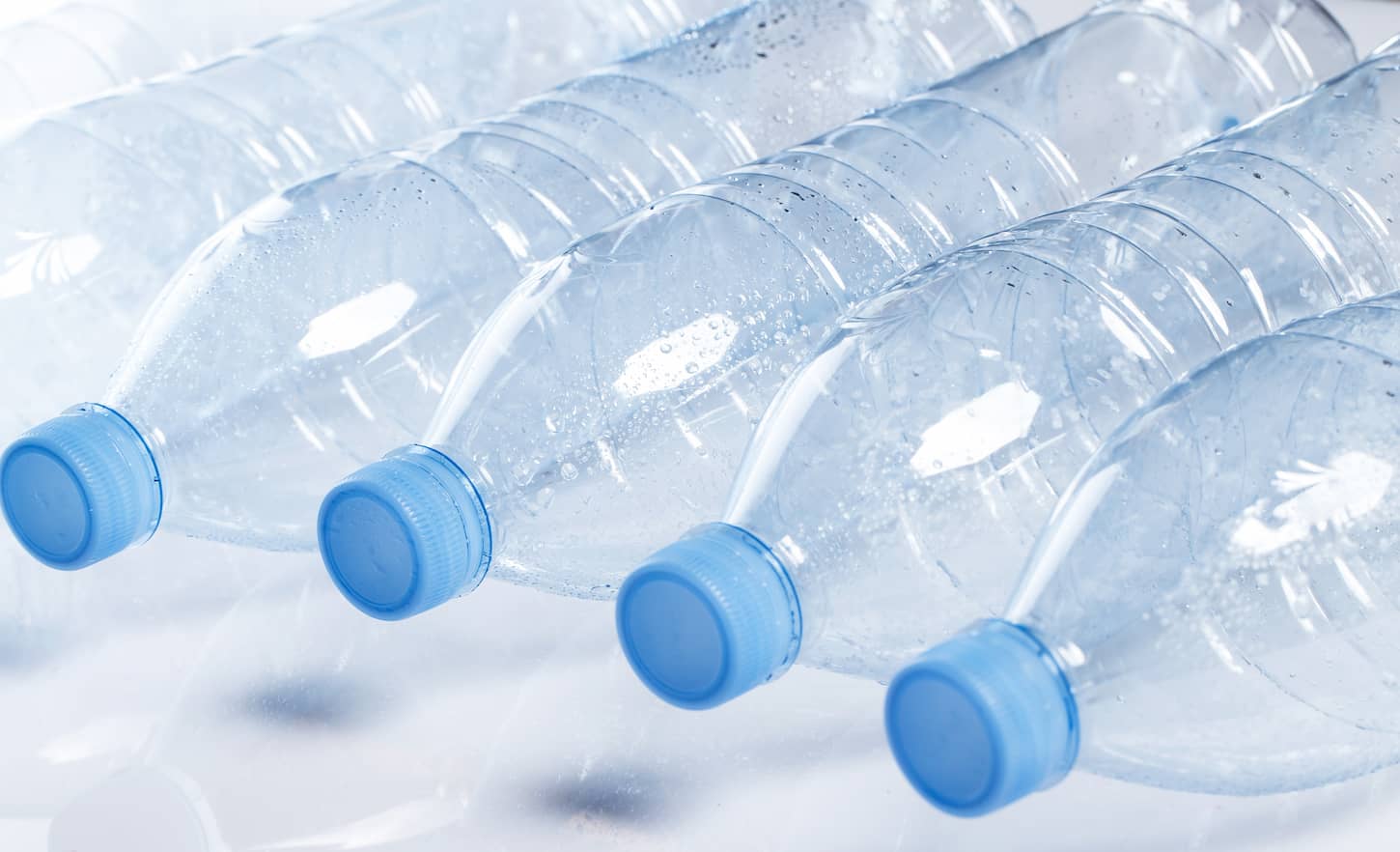
Stored Water – Contaminated or No Longer Safe to Drink?
The ideal water that is safe to use should be clear, has no odor, and has no funny taste. If stored water is no longer clear, has an odor, or has an odd taste, do not drink it. Discard it or purify it again before consumption.
Here is the estimated amount of time before your water becomes contaminated.
| Water storage type | Amount of time before contamination |
|---|---|
| Open cup | 1 to 3 days |
| Self-sealed container (clean tap water) | 6 to 12 months |
| Purified water in a food-grade tank | 2 to 5+ years (Sealed properly with water preserver) |
So, how can you tell if your water is already contaminated? One of the best answers to that is to trust your senses. Below is a list of signs that you can compare to – to know if your water stock is already contaminated.
Sign #1: Cloudy water has something in it
One of the first signs to know if your water stock is contaminated is if it looks cloudy or foamy.
Check your water stock, if the cloudy texture does not disappear over time then your water might already be contaminated.
Discard it immediately and clean your water tank and refill it with water again.
Sign #2: Water shouldn’t smell or have a weird taste
Non-BPA plastic bottles can sometimes leach chemicals into your water stock. If there is already an unusual odor and taste in your water, it is recommended to discard it immediately.
Sign #3: Dirty water is dirty
Sometimes, you will see some dirt at the bottom of your water tank or bottle. It may look dirty and not attractive, but, most of the time these particles are not dangerous so it is completely safe to use.
If you want to clean your water bottle or tank, use these steps.
- Get a cleaning brush or a water bottle cleaning brush
- Scrub the sides of the tank and the bottom portion of it
- Rinse, refill, and seal it tightly
If you’ve got to drink water with dirt at the bottom in an emergency, remember it’s clear. Just move your pump up so it’s not pulling up dirt. Try to leave the dirt settled at the bottom – and drink from further up.
Sign #4: Algae in water is dangerous
Some materials do not block the sunlight. This can result in the growth of algae in your water tank.
Do not use algae-affected water for drinking and washing. It’s not safe. Some algae give off a toxin that is deadly, and it’s really hard to guess which algae are which in an emergency. So don’t chance it, especially if you can avoid algae altogether.
Boiling the water does not guarantee the removal of toxins in it.
Therefore, the best solution that you can do is to buy a water bottle or tank that does not allow sunlight to come through and avoid algae altogether.
Sign #5: Organisms swimming in the water
If you can already see some moving organisms or creepy crawlies in it, it is likely already unsafe. This usually means that your water tank isn’t sealed tightly or there is a leak on it.
But, to properly know if your water is contaminated you can buy test strips and a color disk kit, which you can use to test your water. Or you can get a sample of your water stock and go to the nearest water testing laboratory in your area.
If that’s not possible, though, then go ahead and discard the water. Look for any signs of a leak in the container. Pour some water in and see if that helps you find the leak. If there is no leak, then you can proceed with cleaning it, sanitizing it, and prepping to use it again. Make sure to seal it properly this time.
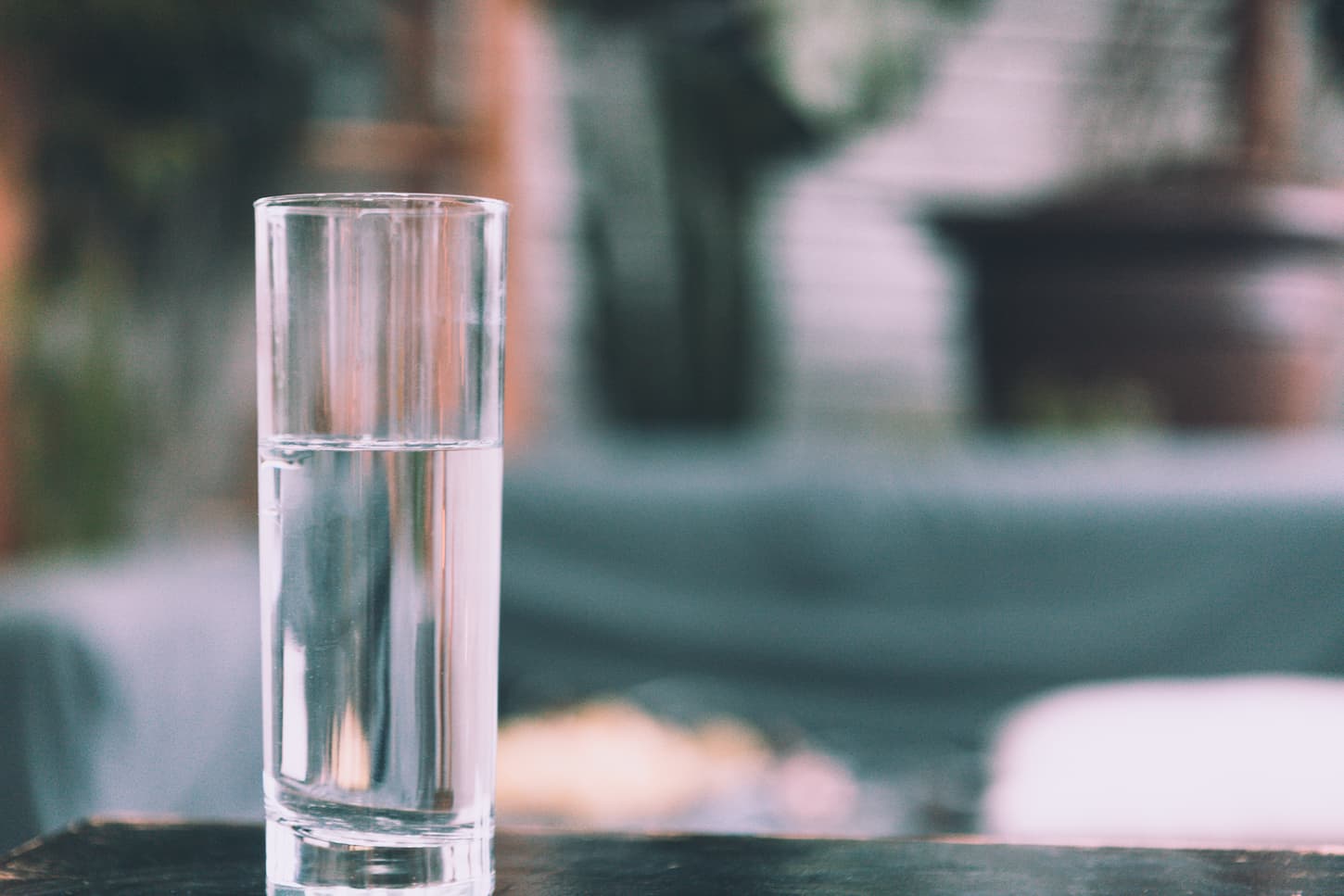
Can Water Be too Stale to Drink?
Water left out or stored long-term may have a different taste than usual, due to air content in the water changing or other molecular-based chemical reactions. Adding air to the stored water, via shaking it in a smaller container, can restore much of the “usual” water flavor.
Have you ever tried leaving a glass of uncovered water for 12 hours? Do you feel like it doesn’t taste the same anymore? If yes, then here is the reason for it: a small amount of carbon dioxide mixes into your uncovered water; which forms carbonic acid, which later on results in the reduction of pH levels in your water.
So, when you take a sip from it – it already tastes different. Should you be worried? The answer to that is yes and no.
Yes, because you don’t know what’s in it besides the natural chemicals of course. There may be dust, debris, or bugs in it now. Our saliva also contains bacteria which can potentially contaminate the water that is left overnight says Marc Leavey, MD, a primary care specialist at Mercy Medical Center in Massachusetts.
So, yes, it is not super sanitary, but, since it is your bacteria you can also not get worried about it and you can still drink it unless that water is left for multiple days already.
That is if your water is left uncovered but, if it is properly sealed, you used the right preserver and you properly stored it, then you are safe – your water stock may even last for years. Just remember to shake some air into it when you do open it.
But maybe don’t shake the whole 55-gallon drum. Pump out what you need, and then maybe shake air into it when it’s in something more manageable, like a water bottle. Of course, pumping it out will already jump-start the aeration of your water, so that’ll help, too.
You can also keep a stash of kool-aid or drink mix on hand. Add that to the water – and you won’t be able to notice the stale flavor anymore. We keep a stash of sugar-free lemonade and kool-aid tropical punch on hand just in case our stored water tastes too stale.
What can you do with stale water?
Stale water can be used o drink, cooking, cleaning, gardening, for pets or livestock who don’t mind stale water, or anywhere else regular water is used. Stale water is also great for flushing toilets.
If you don’t want to use your water stock anymore, you can still use it on your plants, don’t worry it will not harm your plants. If the quantity of water is more – you can use it on your lawn or wash your car with it, or even use it to flush your toilet. Save water!
Best Water Storage Products
Here are some products that you can use to jumpstart your water storage. Many of them are on Amazon, so make sure you click the links to see current sale prices.
Water containers:
- Collapsible gallon water container – choose from three different sizes. Comes with the spigot you’ll need to get to your water. This is a great choice for camping, too. If we needed a smaller container, we’d get this.
- Blue, rectangular 7-gallon water container – this is the one we use, as it helps prevent algae growth. We use it when we go camping. With a family of 6 and 2 pets, we count each one of these as a day’s worth of water.
- The big, 55-gallon blue water drum of ultimate water storage – this is what we have in our at-home water storage. You may be able to find some locally for a better price, so don’t hesitate to shop around.
Don’t forget to get a water pump to go with the storage barrel!
Food-grade drinking water hoses:
- Blue, polymer hose, rated as food-grade for drinking water (click here to see best prices and available sizes on Amazon).
- Reinforced, kink-free drinking water hose (click here to shop hose sizes on Amazon). This looks a lot like the water hoses used in travel trailers.
Water preserver concentrate
- Preserver for water (one bottle treats a 55-gallon drum) advertised as guaranteed to help your water store for at least five years. Click here to see it on Amazon now.
Water purification options (chemical)
- Water purification tablets (we keep these on hand for emergency chemical treatment of water).
- Emergency water bottle with filter (we’re partial to the Lifestraw brand). We’ve also got one of their collapsible bag filters for hiking and emergencies.
- Food-grade bleach – I’ve never found this on Amazon. In fact, I’ve only ever found it at my local grocery store. Even so, it’s amazing.
This is another time I highly recommend you get a stash of drink mix to keep on hand for emergencies. Drink mixes are a great way to mask odd flavors from stale or chemically purified water.
Bung wrench (to open the 55-gallon drum)
- Aluminum drum wrench (click here to see the best price on Amazon).
- Red drum wrench on Amazon (click here to see it now).
Seriously. Don’t skip the drum (or bung) wrench. They make life so much easier! While you’re at it, go get a bung wrench lid lifter while you’re at it. We call it a “bucket opener,” but it’s the same thing. It’s a must-have if you don’t have gamma spin lids for your food storage buckets.
Cleaning brush
- Set of 3 silicone cleaning brushes (shop now on Amazon). This one set should get you covered for pretty much any bottle or container size you need to be cleaned.
- Or if you’d rather skip the manual work, get this electric brush set on Amazon to get those containers cleaned.
Cleaning brushes really do make things easier. Don’t skip them.
Water test strips and color disk kit
- Water test kit – test for 16 different things with this kit. Click here to see the current sale price.
- Water test kit with 17 tests and 100 strips. Shop for this kit on Amazon.
Both kits work well – the difference is going to be which one is on sale, and how much you want that extra test. I searched through it, and either one should be just fine. We have one of them, but we lost the box, so I can’t remember which one it is. But hey – it works for aquariums, too!
Key Takeaways on Storing Water
Water really is important to store. It’s a vital part of life and therefore food storage. Start with the size you can, and upgrade (or change) from there.
We’ve owned a 15-gallon barrel (bought at IFA), but it ended up not being a great size for us. We own multiple 7-gallon barrels (middle image below) that we use when camping. And we’ve got a 55-gallon drum in our cold storage pantry. Currently, we’re looking at our options to expand past the one 55-gallon barrel, but we do need to figure out space.
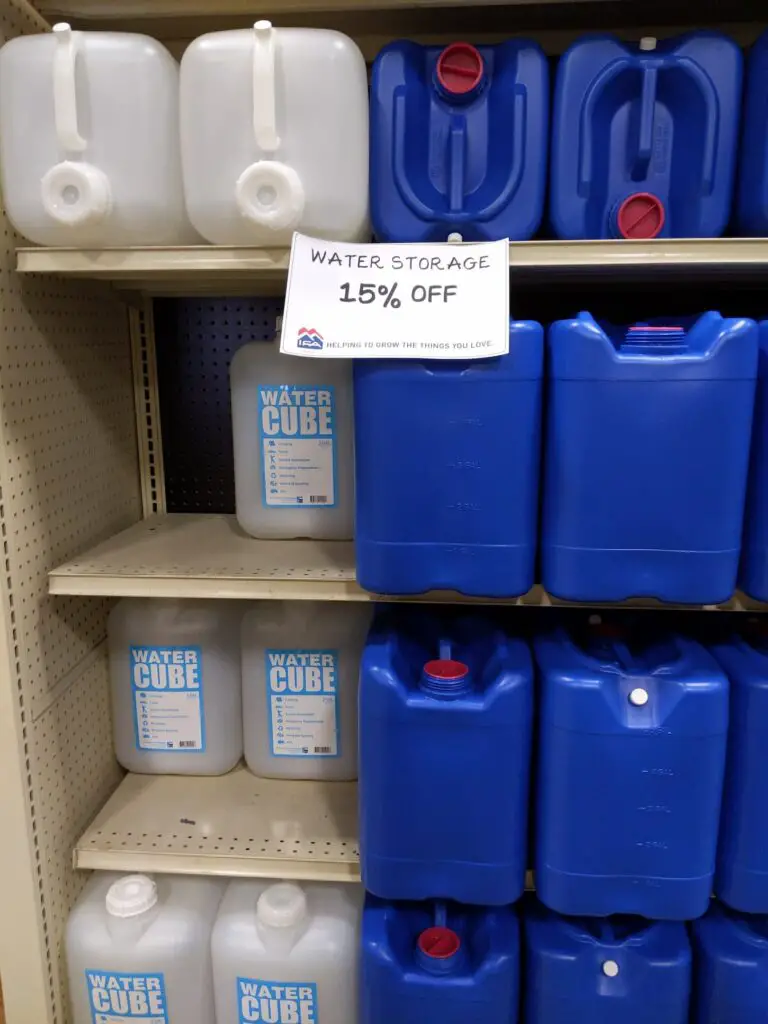
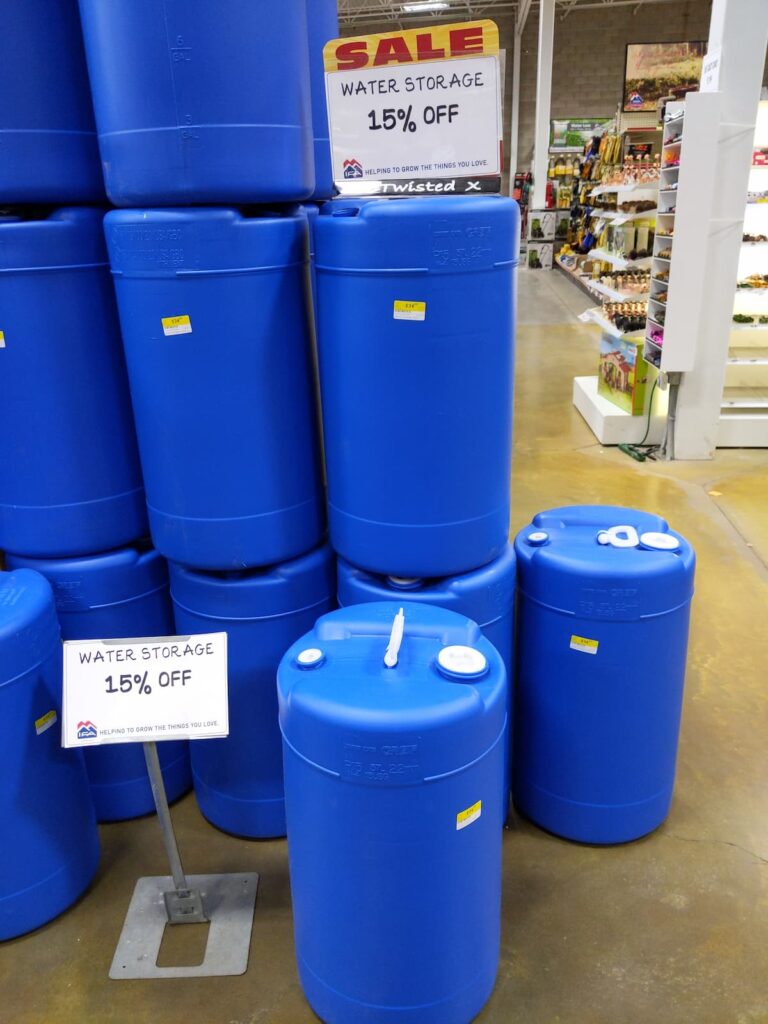
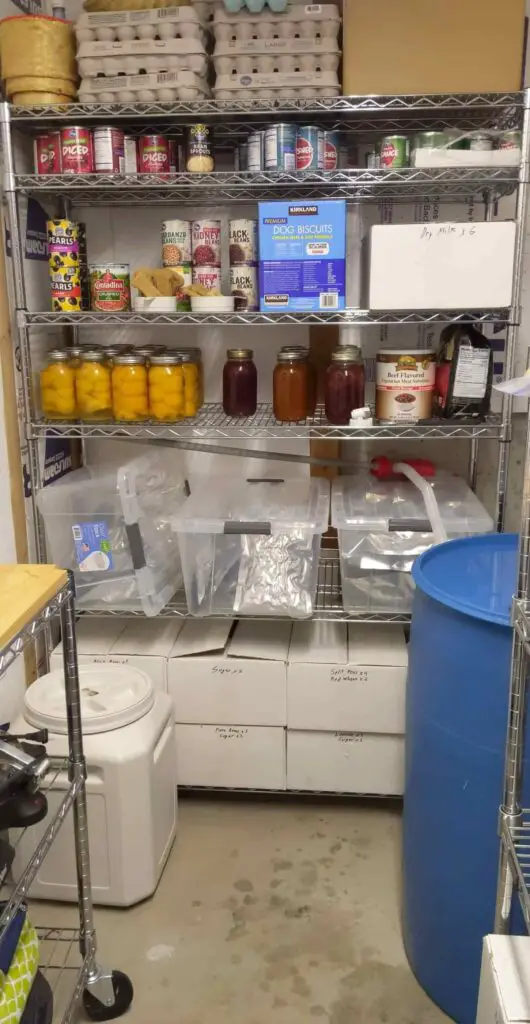
I’ve seen some horizontal storage options for full water barrels, but I’m not sure that’s right for us. And I can’t figure out how someone lifted a full barrel onto those! Filling them to the brim while horizontal might be an option, but I haven’t figured that thought experiment out yet.
In any case, water is life. So make sure you’re including water in your preparedness plan. Then make sure you’re signed up for our totally free newsletter. It’s pretty awesome – and I love being able to send you helpful tidbits from time to time.
Happy homesteading, friends!
Resources
Learning from your own experience is essential, but learning from others is also intelligent. These are the sources used in this article and our research to be more informed as homesteaders.
- Albertin, Andrea, et al. “SL220/SS439: Preparing and Storing an Emergency Safe Drinking Water Supply.” AskIFAS Powered by EDIS,
- University of Florida, Institute of Food and Agricultural Sciences, 12 Aug. 2020, edis.ifas.ufl.edu/publication/ss439.
- Kwaku. “How Long Can Boiled Water Be Stored at Room Temperature?” Air & Water Expert, Air & Water Expert, 29 Oct. 2020, airandwaterexpert.com/how-long-can-boiled-water-be-stored-at-room-temperature/.
- Manneh, Elizabeth. “Is It Bad to Drink Water That’s Been Sitting Overnight-Or Longer?” Reader’s Digest, Reader’s Digest, 22 May 2020, www.rd.com/article/is-it-bad-to-drink-stale-water/.
- Swistock, Bryan, et al. “How to Store Water for Drinking or Cooking.” Penn State Extension, 11 July 2016, extension.psu.edu/how-to-store-water-for-drinking-or-cooking.
- Services, Oakville Water. “Common Problems With Water Storage Tanks.” Oakville Pump Service, Oakville Pump Service, 26 July 2020, oakvillepump.com/blog/2020/6/16/common-problems-with-water-storage-tanks.
- “Water, Sanitation, & Hygiene-Related Emergencies & and Outbreaks.” Centers for Disease Control and Prevention, Centers for Disease Control and Prevention, 14 Apr. 2021, www.cdc.gov/healthywater/emergency/index.html.
- “Water.” Water | Ready.gov, 22 Feb. 2021, www.ready.gov/water.
